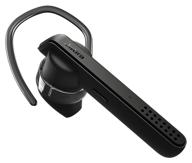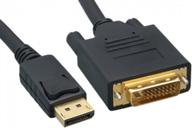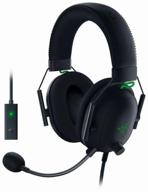
Review on 📱 Phonex PX211-D Easy Jack 2 Wireless Web Data Jack System by Tammy Sutton

Works fine for me. Maybe not the answer for everyone.
First of all I would like to tell you what the Phonex PX211-D Easy Jack 2 is not: Firstly, it is not a broadband device. That means you can't use it for Wi-Fi or Ethernet applications; or, for that matter, Bluetooth. Its only networking functionality is the ability to provide a phone line for voice or data/fax/satellite modems. In most cases you will probably use it for fax or satellite communications. If you're unfortunate enough to have dial-up internet access, well, my deepest condolences. Second, it's not designed for voice applications. The D in the PX211-D stands for "Data" - i.e. computer modems, fax machines, satellite receivers. You can use it for voice, but you'll probably find that it's pretty loud. More on that later. Now to what the Phonex PX211-D Easy Jack 2 is: Installing a new phone jack can be costly or even impossible depending on the area of your home, which poses a problem for those who have bought a new fax machine or other phone device and are finding this you can't connect it anywhere. This is where the Phonex PX211-D Easy Jack 2 comes into play. The Phonex PX211-D Easy Jack 2 allows you to have a telephone jack over your home's electrical wiring where there is currently none. Pretty cool right? Here's how it works: Your house or apartment has at least one working phone jack. A telephone and possibly another telephone device (e.g. an answering machine) is connected to your telephone socket. This is the jack that supplies the desired sound to the PX211-D remote control. The base unit takes this beep as input and sends it over the house wiring to the remote unit where the remote unit relays it to the phone device which has asked you to look for this solution. Computer networking experts might call this a "bridge". Installation: Base Unit1. Plug the PX211-D base unit into a wall outlet close to your existing phone jack. Do not connect the device to an extension cord.2. Disconnect the existing phone's line cord from the wall outlet and connect it to the PHONE3 jack on the PX211-D base unit. Connect the new telephone cable to the telephone wall jack and to the LINE jack on the PX211-D base unit. The base unit is now installed and its LED should be green. If it's not green, your phone line isn't recognized. Remote Unit 1. Plug the PX211-D remote unit into a wall outlet near a telephone device that requires a telephone line. Do not connect the device to an extension cord.2. Connect a line cord between your telephone device (such as a fax machine) and the telephone jack on the remote PX211-D. If you want, you can start with an old wired phone for testing purposes. The remote unit is now installed and will turn green when it detects the base unit. At this point, the remote device should beep. A NOTICE. This applies to an installation that includes a remote module. It is possible to have multiple remote blocks. Please note the operating instructions. Location, location, location: I'm fortunate that most rooms have phone jacks. Without an annoying mouse with an appetite for Category 5 cables, I wouldn't have had to buy the PX211-D at all, since I already had the wired connection in the office. But RoboMouse really nailed it, and if I wanted my new Brother All-in-One in my office, the PX211-D was my best bet to get it (besides paying someone to crawl 50ft under my house) . That's why I ordered it. It seems to matter where these blocks are installed. If your experience is like mine, you can't pick a pair of power outlets and make this product work just because one of them is next to an existing phone jack. In fact, I was blown away by how many site combinations either didn't work at all or resulted in unbearably slow fax transmissions. As a result, the base unit ended up in my bedroom. Changing the location of the remote device did not help. The exact reason for this sophistry on the part of the PX211-D is unclear, but I have a theory. In a typical home, two hot legs are powered at 120V each. Each leg can be used alone to provide 120V or together to provide 240V. Your switch panel is designed so that the switches on one side can use one of the 120V hot legs and the switches on the other side use another hot leg. If you choose base and remote sites that are powered from opposite sides of the panel, problems can arise. Again, this is theory, not fact. Speech: As I mentioned earlier, I suspect that when using the PX211-D for speech, you will hear noise in many installations. How strong the noise is and how much it interferes with data transmission is something you simply have to find out for yourself, as everyone will be different. In my case a lot of noise. I don't use the PX211-D for speech though, so I don't care. Caller ID: I haven't had any issues with caller ID. It displayed exactly as it should on my Brother MFC-J5910DW. Discrimination Ring: I haven't had any problems with the Discrimination Ring. I installed the first DR ring option (1 = long-long) on my Brother MFC-J5910DW and it just worked. Sending Faxes: As I mentioned earlier, my first choice of device placement wasn't ideal and as a result faxes were very slow. . After moving the base unit into my bedroom, my experience changed dramatically. I don't know exactly what speed the Brother fax modem achieved when sending and receiving, but the difference was both day and night. Bottom Line: The PX211-D is worth the investment in data applications if your home's electrical wiring will allow. as expected. give him a chance The worst that can happen is that it doesn't fit you and you have to send it back. If you're considering this product for a voice application, I'd recommend getting a good cordless phone instead.
- Telephone Accessories
- Weight
New products
Comments (0)
Top products in 📱 Telephones & Accessories
Another interesting products

📷 CZUR Shine800-Pro: High-Speed Document Camera for Mac and Windows with OCR Function

10 Review
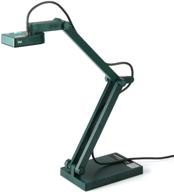
IPEVO V4K: Ultra High Definition 8MP USB Document Camera - Perfect for Live Demos, Web Conferencing, Distance Learning & Remote Teaching on Mac OS, Windows, and Chromebook

3 Review
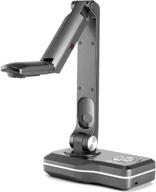
JOYUSING 8MP Document Camera for Teachers - VGA/HDMI/USB Three Mode, Mac, Windows, Chrome Compatible - Ideal for Online Teaching, Distance Learning, and Web Conferencing

3 Review
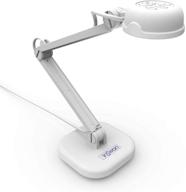
🎥 Enhance Distance Education & Web Conferencing with INSWAN INS-1 - Tiny 8MP USB Document Camera

3 Review


